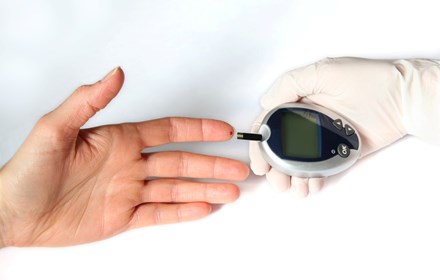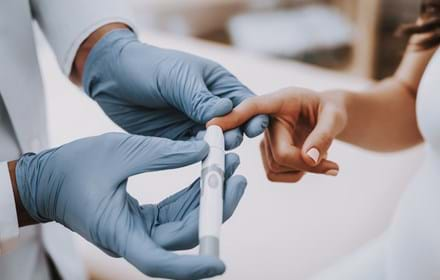
Study confirms theory about causes of retinal damage linked to type 2 diabetes
Researchers find that reduced oxygen to the retina can damage blood vessels and cause diabetic retinopathy.
Retinal damage is a common complication of type 2 diabetes, that can ultimately lead to blindness, but until now there was only speculation about what may cause this condition.
In a recent study, researchers put the theory to the test – that reduced oxygen transport to the retina due to damage in blood vessels can cause diabetic retinopathy.
Diabetic retinopathy is a sight-threatening long-term complication of type 2 diabetes. The retina lines the inside of the eye and acts rather like the film in a camera. The macula is the small central part of the retina you use to see things clearly and is the part you are using now to read this leaflet. The rest of your retina is used to view the world around you and to see in the dark.
Specific changes in the eye develop as a direct effect of raised glucose levels on the small blood vessels in the part of your eye called the retina and are known collectively as “diabetic retinopathy”. Changes to these retinal blood vessels can damage your sight.

Picture: Contact-free measurement of oxygen saturation at the retinal vessels. In the centre, the optic disc through which the vessels enter the retina: blue means low saturation, read means high saturation. Courtesy of the Medical University of Vienna / Garhöfer
Researchers at the Medical University of Vienna, Austria confirmed that impaired eyesight is caused by reduced oxygen transport to the retina, following a clinical study involving patients aged 65 on average.
Gerhard Garhöfer, ophthalmologist and clinical pharmacologist at the University Clinic for Clinical Pharmacology at the Medical University of Vienna, who led the study, emphasised the importance of the eye for research and medicine, and described it as “a window to microcirculation in the finest blood vessels”.
These vessels, that can be easily observed in the eye, supply the retina to manage gas exchange and metabolism in tissues all over the body, from the kidneys to the toes.
The condition they are in can indicate complications of the eye and various other medical conditions.
One such complication is type 2 diabetes, a form of metabolic disorder that is strongly linked to age and lifestyle.
Diabetic retinopathy affects around half of people living with type 2 diabetes who have had the condition for a long time and/or whose sugar levels are poorly managed.
High blood glucose levels cause damage to the blood vessels and prevent them from functioning.
Although new blood vessels are formed in response to the lack of oxygen in the retina, these can increasingly impair vision.

As new cases of type 2 diabetes continue to rise, doctors expect to see an increasing number of diabetic retinopathy cases.
Latest figures from the International Diabetes Federation estimate that in 2019, 9.3% of the population worldwide, or 463 million people, had a diabetes diagnosis. By 2030, that number is expected to rise to 10.2% (578 million). It often takes time for the diagnosis to be made: one in two people living with diabetes are not aware of having the condition.
The study involved 70 people living with type 2 diabetes with an average age of 65 without or with different degrees of advanced retinal damage.
They were compared with a control group of 20 people without diabetes.
Since it is not possible to directly measure oxygen extraction from the blood into the tissue, blood flow and oxygen saturation in the retina of the patients were measured with a contact-free technique.
Dr Garhöfer said: “Our results show that with increasing severity of the disease, less and less oxygen finds its way from the blood into the tissue. On the other hand, we found that even in people with type 2 diabetes who did not yet show any visible changes in the retina, less oxygen was already supplied to the retina. This means that the gas exchange was already compromised before the damage was clinically diagnosable.
“In order to administer the right treatment, we need to understand the development and progression of a disease. Our research has helped to improve our understanding of the pathophysiology of the eye in diabetes.”
Having confirmed that oxygen delivery to the retina is reduced in patients with diabetes, this could help to identify high-risk patients and to instruct them better in terms of therapy and compliance. Dr Garhöfer also plans to apply this technique to other complications, including neurodegenerative eye diseases.
Read the report in Diabetes
Read the DRWF diabetes information leaflet How can diabetes affect my eyes? here
I would like to make a regular donation of
I would like to make a single donation of
There are lots of ways to raise money to support
people living with all forms of diabetes.
Bake, Swim, Cycle, Fly ... Do It For DRWF!
Fundraise with us
Recent News


